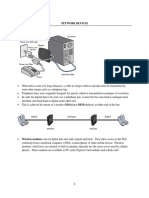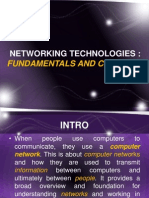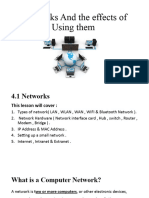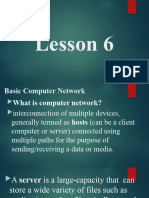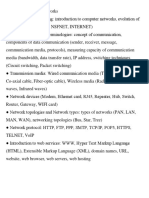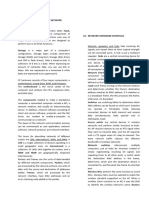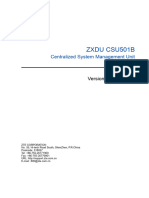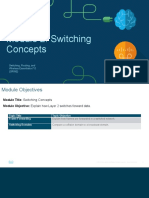0% found this document useful (0 votes)
39 views40 pagesNetworking Components Notes
The document outlines various networking components, both hardware and software, essential for network connectivity and management. Key hardware components include clients, servers, NICs, hubs, switches, routers, modems, and access points, each serving specific roles in data transmission and network communication. Software components discussed include firewalls and network operating systems, which manage security and facilitate resource sharing across networks.
Uploaded by
mwendamark125125Copyright
© © All Rights Reserved
We take content rights seriously. If you suspect this is your content, claim it here.
Available Formats
Download as PDF, TXT or read online on Scribd
0% found this document useful (0 votes)
39 views40 pagesNetworking Components Notes
The document outlines various networking components, both hardware and software, essential for network connectivity and management. Key hardware components include clients, servers, NICs, hubs, switches, routers, modems, and access points, each serving specific roles in data transmission and network communication. Software components discussed include firewalls and network operating systems, which manage security and facilitate resource sharing across networks.
Uploaded by
mwendamark125125Copyright
© © All Rights Reserved
We take content rights seriously. If you suspect this is your content, claim it here.
Available Formats
Download as PDF, TXT or read online on Scribd
/ 40


